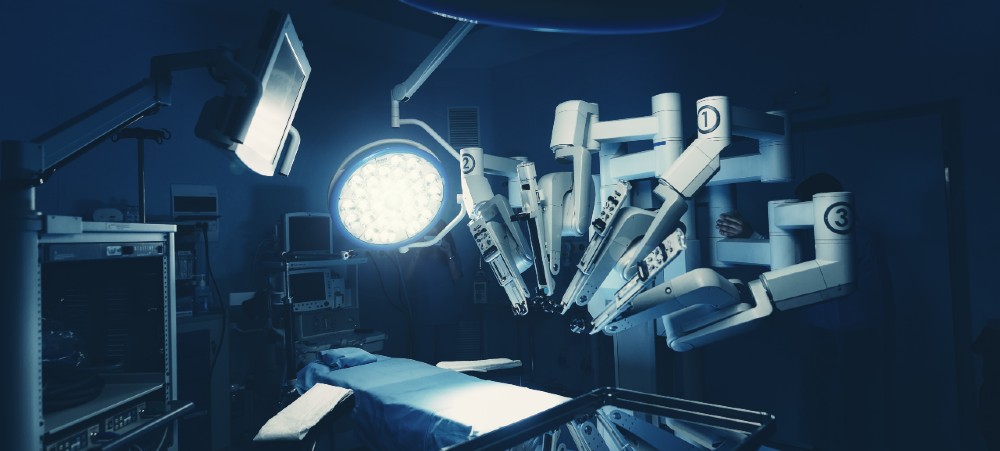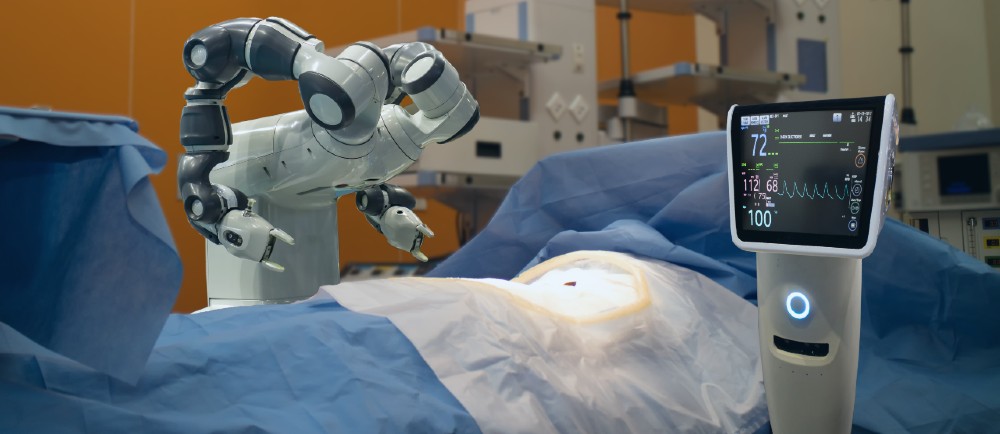Surgical Support Robot Completes First Surgical Procedure
In 2000, the da Vinci surgical robotic system (photo below) became the first to be introduced in Japan, and was approved for wider use in 2009. Japan has a very reputable and stable healthcare system, and therefore is often extremely innovative in the surgical field. As successful surgery has been carried out by the first domestically produced surgical robot, let's take a look at innovations in Japanese robotic surgery.

The da Vinci surgical robotic system has been in use in Japan for two decades.
Support Robot Hinotori
The new surgical support robot, Hinotori, was developed by Medicaroid and Kawasaki Heavy Industries, and the surgery was performed at Kobe University Hospital. The surgery involved the removal of prostate cancer, a type of keyhole surgery commonly supported by robots. The machine is operated by a surgeon remotely, who views 3D images from an endoscope. Approval for the robot's development was gained in August 2020, and there are hopes to expand its use in the treatment of other urology diseases. Although the da Vinci system is still dominant in Japan's market, many hospitals find it difficult to introduce due to high operating costs.
Da Vinci Robotic Support
The da Vinci robotic support system is an advanced piece of machinery, with sophisticated remote-controlled arms and easy operability. In 2018, da Vinci support robots were used in about 10 million surgeries, and are now the most commonly used on the market. However, robotic procedures are expensive, costing between 150 million and 300 million yen. In fact, tens of millions are needed to operate the machine, including the costs of disposables. The introduction of the new Hinotori system could help even more hospitals introduce this type of surgery due to lower prices and running costs.

The use of robotics in surgery is expanding in Japan and worldwide.
Benefits of Robotic Support
Surgical robots are known to be less invasive, as they reduce the need for large incisions. This improves a patient's recovery time and decreases discomfort. Patients may have to contact a surgical errors attorney in cases where human intervention has caused them an injury, however, as procedures must be closely monitored by specialists, and surgeons will intervene if necessary. The use of a surgical robot improves the surgical accuracy, as it will compensate for shaking hands and reduce fatigue in the operator. The future of robotic surgery lies with surgeons who may require training to operate more of these innovative machines and to expand their use in a range of surgeries.
This new development could expand the use of robotics in Japan and worldwide. Several specific robots have been developed to target specific areas that the da Vinci and others cannot reach; therefore, it is likely that robot assisted surgery will soon advance even further.
Related content
